 |
||||||
| HOME | A BIT ABOUT BUGS | GALLERY | SYSTEMATIC LISTS | RECORDING BUGS | CONTACT US | LINKS |
| Trioza
centranthi Family: Triozidae Triozidae species have the three main veins in the forewing arising from a common point, and have usually pointed forewings with radular spinules. Many cannot be separated without dissection, but host-plants can be useful. Trioza centranthi is a potentially difficult species to identify, and males should be checked by examination of parameres. Female terminalia are moderately long, with a distinctly concave upper margin in the distal half. Colouring is initially pale, typically orange/green when young with pale transverse bands, darkening to brown later. Antennal segments I-III pale, remainder dark, legs concolourous with body. The wings are generally colourless, with outer vein (Rs) somewhat sinuous. T. centranthi is a historically rare and scattered species that may be increasing in recent years, primarily on the south coast of England. Nymphs form distinctive leaf-roll galls on Red Valerian (Centranthus ruber), but also feed on Valerianella. Adults overwinter on evergreens. Adult: All year Length 2.5-3.0 mm |
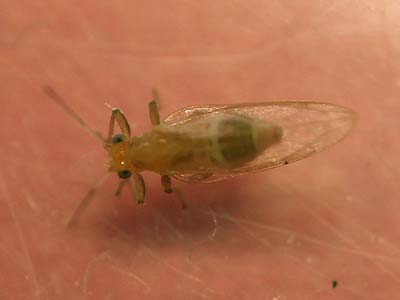 |
| Adult teneral male (reared): Dorset (September 2012) ©Sally Luker | |
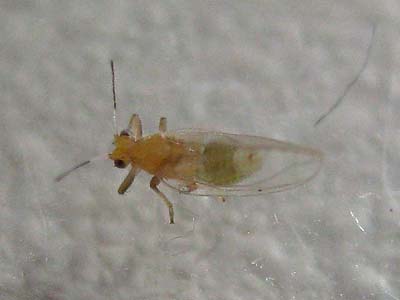 |
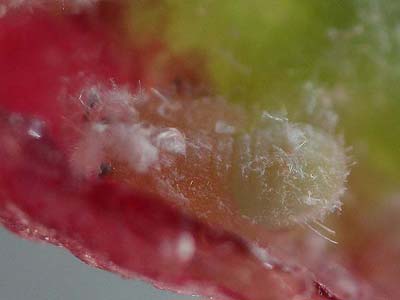 |
| Adult teneral male (reared): Dorset (September 2012) ©Sally Luker | Nymph: Dorset (September 2012) ©Sally Luker |
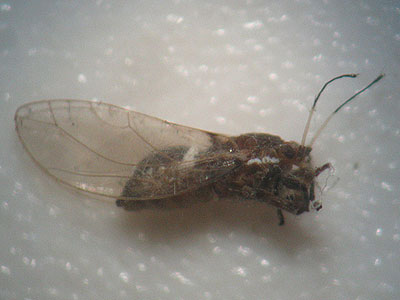 |
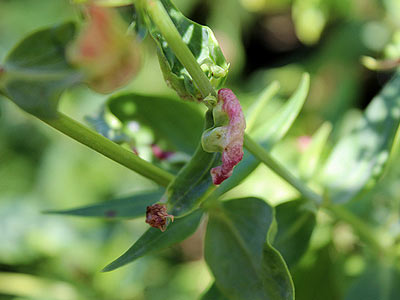 |
| Adult female (reared): Dorset (October 2012) ©Sally Luker | Gall on Centranthus ruber: Dorset (September 2012) ©Sally Luker |